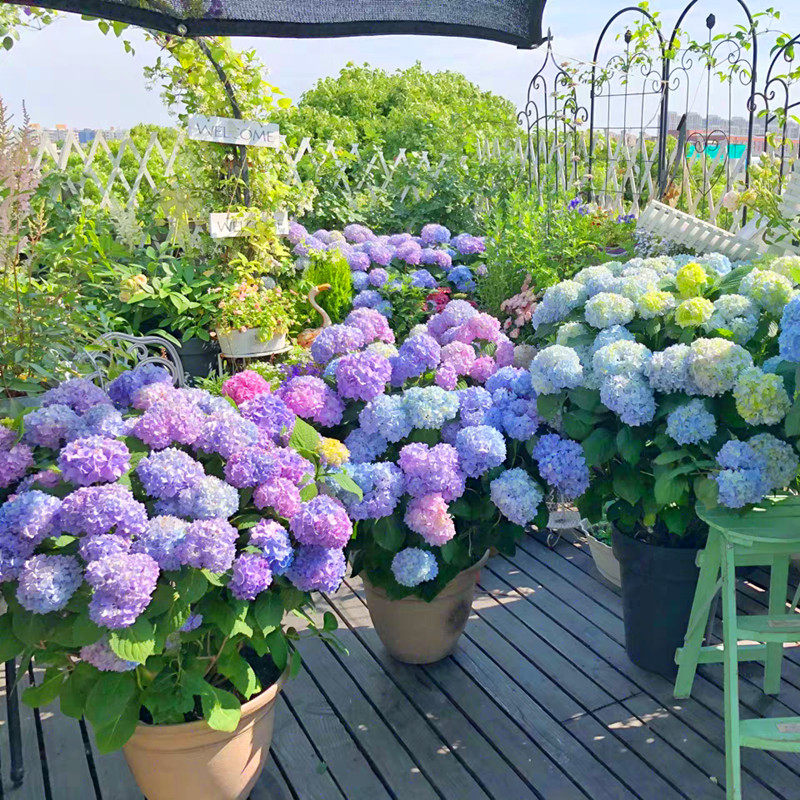
Hydrangea (scientific name: Hydrangea macrophylla (Thunb.) Ser. ): It is a plant of the genus Hydrangea in the saxifrage family. Shrubs, 1-4 m tall; stems often form a circular shrub with many radiating branches at the base; branches cylindrical. Leaves are papery or nearly leathery, obovate or broadly elliptic. Corymbose cymes subglobose, 8-20 cm in diameter, with short peduncles, dense flowers, pink, light blue or white; petals oblong, 3-3.5 mm long. Capsule immature, long top-shaped; seeds immature. The flowering period is June-August.
Hydrangea has plump, large and beautiful flowers. Its color can be red or blue, which is pleasing to the eye and refreshing. It is a common potted ornamental flower and tree. The parks built in the early 20th century are also inseparable from the planting of hydrangeas. Modern parks and scenic areas are planted in patches to form a landscape.
Hydrangea is native to Japan and Sichuan, China. Introduced to England in 1736. In Europe, the cultivation in Holland, Germany and France is relatively common, and you can see red, blue, purple and other color hydrangea varieties in flower shops. There are also many hydrangeas planted in small gardens and in front of buildings. The Rampp Jungpflanzen company in Germany is a world-renowned company that produces hydrangea, and it is also the most important cultivation and production unit for new hydrangea varieties. Secondly, the Netherlands’ Men Fanwen Company and Israel’s Jager Nursery are also major producers of hydrangeas. In Asia, hydrangea is mainly produced in Japan. There are many varieties of hydrangea in gardening stores. You can see many new varieties with strange colors and expensive prices. They are all used as family potted plants.
